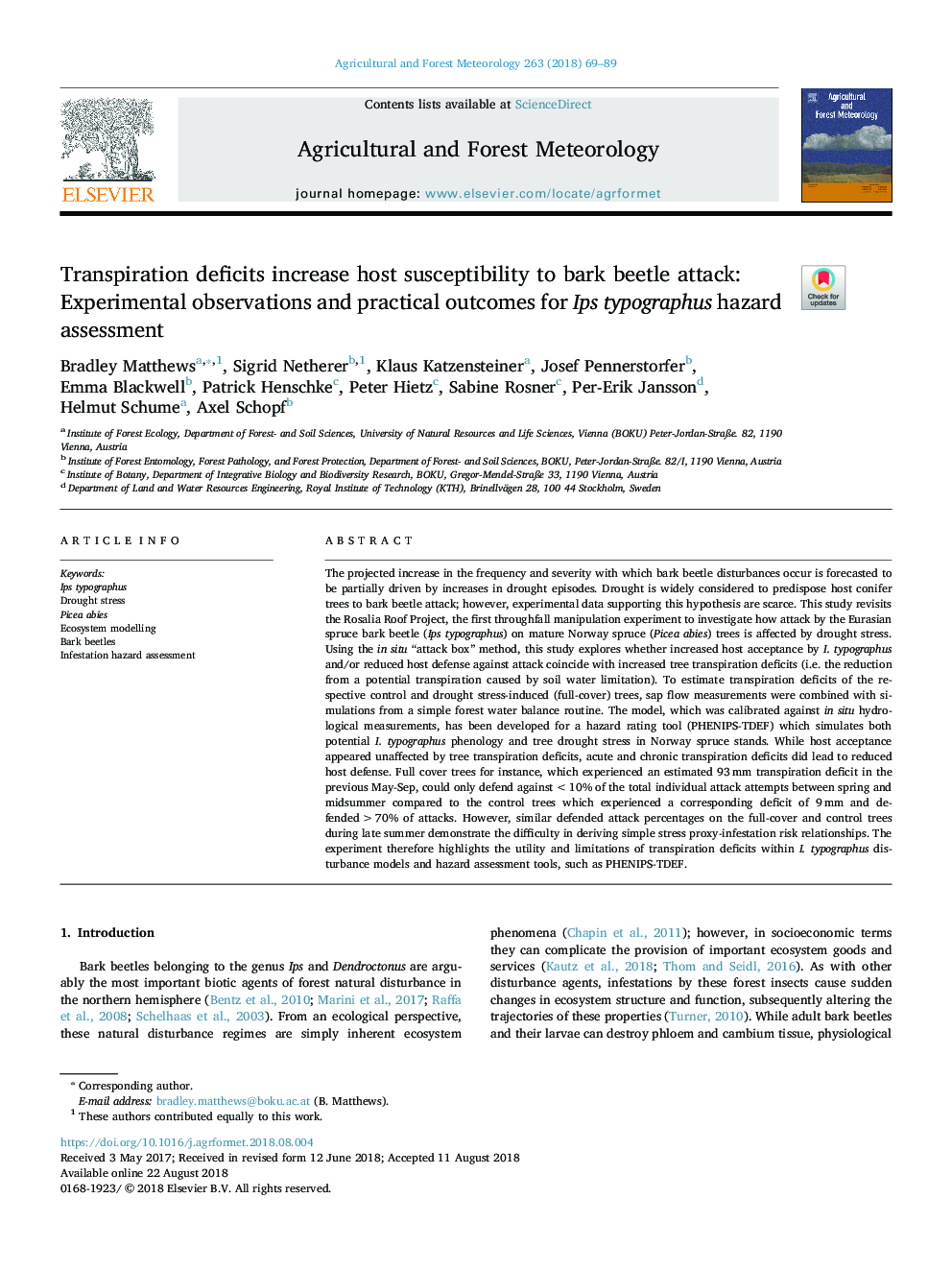| Article ID | Journal | Published Year | Pages | File Type |
|---|---|---|---|---|
| 9951656 | Agricultural and Forest Meteorology | 2018 | 21 Pages |
Abstract
The projected increase in the frequency and severity with which bark beetle disturbances occur is forecasted to be partially driven by increases in drought episodes. Drought is widely considered to predispose host conifer trees to bark beetle attack; however, experimental data supporting this hypothesis are scarce. This study revisits the Rosalia Roof Project, the first throughfall manipulation experiment to investigate how attack by the Eurasian spruce bark beetle (Ips typographus) on mature Norway spruce (Picea abies) trees is affected by drought stress. Using the in situ “attack box” method, this study explores whether increased host acceptance by I. typographus and/or reduced host defense against attack coincide with increased tree transpiration deficits (i.e. the reduction from a potential transpiration caused by soil water limitation). To estimate transpiration deficits of the respective control and drought stress-induced (full-cover) trees, sap flow measurements were combined with simulations from a simple forest water balance routine. The model, which was calibrated against in situ hydrological measurements, has been developed for a hazard rating tool (PHENIPS-TDEF) which simulates both potential I. typographus phenology and tree drought stress in Norway spruce stands. While host acceptance appeared unaffected by tree transpiration deficits, acute and chronic transpiration deficits did lead to reduced host defense. Full cover trees for instance, which experienced an estimated 93âmm transpiration deficit in the previous May-Sep, could only defend against <10% of the total individual attack attempts between spring and midsummer compared to the control trees which experienced a corresponding deficit of 9âmm and defended >70% of attacks. However, similar defended attack percentages on the full-cover and control trees during late summer demonstrate the difficulty in deriving simple stress proxy-infestation risk relationships. The experiment therefore highlights the utility and limitations of transpiration deficits within I. typographus disturbance models and hazard assessment tools, such as PHENIPS-TDEF.
Related Topics
Physical Sciences and Engineering
Earth and Planetary Sciences
Atmospheric Science
Authors
Bradley Matthews, Sigrid Netherer, Klaus Katzensteiner, Josef Pennerstorfer, Emma Blackwell, Patrick Henschke, Peter Hietz, Sabine Rosner, Per-Erik Jansson, Helmut Schume, Axel Schopf,
